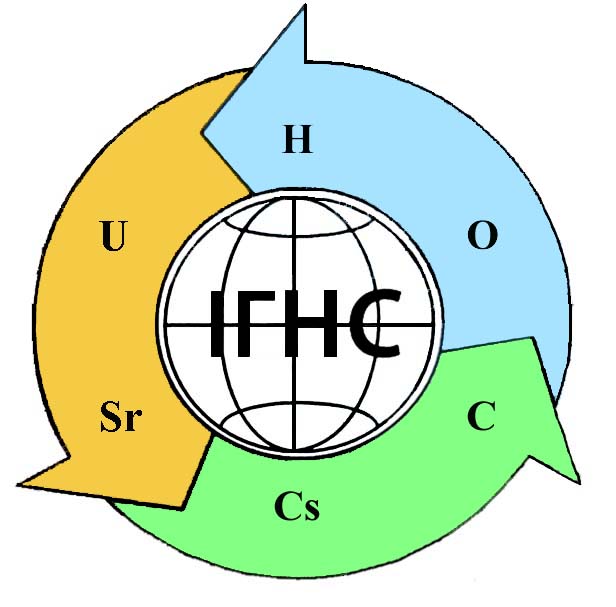CHANGES IN THE CHEMICAL COMPOSITION OF TECHNICAL WATER DURING THE ENRICHMENT OF MAGNETITE QUARTZITE’S AT THE INGULETS MINING AND PROCESSING PLANT
DOI:
https://doi.org/10.32782/geotech2022.35.17Keywords:
magnetite ferruginous quartzite, tailings, technical water, hydrochemistry, mineral processingAbstract
Purpose of the work is performed in the analysis of changes, as they are used at the chemical composition of technical water in the mining processing of magnetite quartzites at the Ingulets mining and processing plant. The main hydrochemical indicators and heavy metals was identified in industrial water before and after mining processing of magnetite quartzites. Sampling of the initial water and the liquid phase of the tailings was carried out separately for two ore processing plants (OPP-1 and OPP-2) of the Ingulets Mining and Processing Plant. In general, the chemical composition of the liquid phase of the tailings in comparison with the initial water changes slightly: pH increases by 5–6% at both plants, the total mineralization increases by 30% only at OPP-1, also on OPP-1 the content of HCO3 increases by 65%. Of the minor anions, only the content of nitrites (NO2-) at their very low values (0,03–0,07 mg/dm3) greatly increases 19 times for OPP-1 and 8 times for OPP-2. Of the cations, significant changes were revealed only for Ca2+, the content of which in the tailings of both plants increases by approximately 50%. The total iron content in the liquid phase of the tailings increases by 90% for OPP-1, and by 450% for OPP-2, the content of dissolved iron increases by about 70% for OPP-1 and by 170% for OPP-2. Differences in the changes in the chemical composition of the liquid phase of the tailings for the OPP-1 and OPP-2 ore-dressing plants are probably due to the additional inclusion of the magneto-flotation enrichment operation in the technological process at OPP-2. The obtained data indicate that during enrichment, the transition of a certain proportion of iron-containing minerals into a highly dispersed colloidal state occurs, and the processes of decomposition and dissolution of minerals of the original ore, primarily calcium and iron carbonates, occur. The study of changes in the chemical composition of industrial water is important for a more complete understanding of the physicochemical processes that occur during the processing of mineral raw materials at the mining and processing plant, as well as for assessing the environmental impact of liquid enrichment waste on the environment.
References
Hubina, V.H. (2009). Osoblyvosti rechovoho skladu ta rozpodil rechovyny u khvostoskhovyshchakh HZK Kryvbasu. Heokhimiia ta rudoutvorennia, 35: 116–120.
Hubina, V.H., Hubin, H.H. (2009). Porushennia hidrolohichnoho ta hidroheolohichnoho rezhymu pidzemnykh ta poverkhnevykh vod v Kryvbasi vnaslidok hirnycho-pererobnoi diialnosti. Ekolohichna bezpeka: problemy i shliakhy vyrishennia, 1: 38–42.
Hubina, V.H., Kadoshnikov, V.M. (2004). Fizyko-khimichni peretvorennia vidkhodiv zbahachennia zalizystykh kvartsytiv. Zbirnyk naukovykh prats Instytutu heokhimii navkolyshnoho seredovyshcha Natsionalnoi akademii nauk Ukrainy “Heokhimiia ta ekolohiia”, 10: 76–79.
Hubіna, V.H., Kadoshnykov, V.M. (2005). Yzmenenyia tekhnohennoho sirya v protsesse nakoplenyia, kontroly upravlenyeeho kachestvom. Kachestvo myneralnoho sіrya, pp. 151–155.
Podatkovyi kodeks Ukrainy: Zakon Ukrainy vid 02.12.2010 r. № 2755-VI (u redaktsii do 01.01.2022). Retrieved from: https://zakon.rada.gov.ua/laws/show/2755-17#Text.
American Public Health Association (2007). Standard Methods for the Examination of Water and Wastewater. New York, USA, 1200 p.









